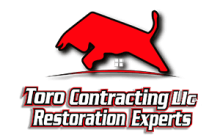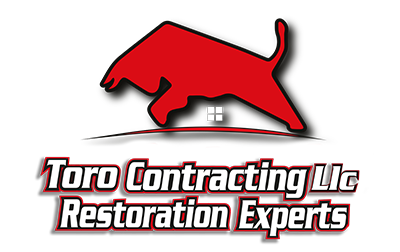Signs of wind damage to your roof include missing or displaced shingles, granule loss in gutters, and curled edges on shingle tabs. Check for visible cracks, damaged flashing around chimneys and vents, and bent or detached gutters. Inside your home, look for water stains on ceilings and walls. Don’t overlook debris in unexpected places, like shingle fragments in your yard. Prompt identification of these indicators can prevent more extensive structural problems.
Key Takeaways
- Missing or displaced shingles, especially in darker patches or with bare spots visible on the roof surface.
- Granule loss from asphalt shingles, evidenced by accumulation in gutters or inconsistent shingle coloration.
- Curled or lifted shingle edges, particularly on corners and slopes facing the storm’s direction.
- Cracked roofing materials showing fresh splits with brighter, unweathered material underneath.
- Water stains on interior ceilings or walls, indicating potential leaks from compromised roof integrity.
Missing or Displaced Shingles
Shingles form your roof’s primary defense against the elements, and when wind speeds reach 45-50 mph or higher, they become vulnerable to displacement. Wind can lift shingles at their edges, breaking the seal and allowing subsequent gusts to tear them off completely.
After storms, inspect your yard for fallen shingles and scan your roof for bare spots or partially lifted tabs. Look for shingles that appear darker or different in color than surrounding areas—this indicates displacement. Prompt identification prevents water infiltration and extensive structural damage.
Shingle replacement costs vary based on damage extent, ranging from $200 for minor repairs to thousands for significant sections. Don’t delay repairs, as missing shingles can lead to more costly interior damage, compromising your home’s integrity and potentially voiding warranty coverage.
Granule Loss on Asphalt Shingles
When high winds sweep across your roof, they often cause asphalt shingles to shed their protective granules, leaving them vulnerable to accelerated deterioration. Check your gutters and downspouts after storms – excessive granule accumulation indicates wind damage requiring immediate attention.
Look for inconsistent shingle colors across your roof, as areas with significant granule loss appear lighter or more faded than surrounding shingles. Different granule types provide varying levels of protection, with ceramic-coated and mineral granules being most common on residential roofs.
You can assess granule loss by gently running your hand over suspicious shingles – excessive loose material confirms damage. Address this issue promptly, as granule-depleted shingles lose their weather resistance and UV protection, potentially reducing your roof’s lifespan by several years.
Curling or Lifted Shingle Edges
Wind direction significantly affects which shingle edges lift first, with those facing the prevailing gusts most vulnerable to curling damage. You’ll notice progressive wind damage when multiple shingles begin displaying uniform lifting patterns, typically starting at corners and edges before moving inward. Check your roof after strong storms by looking for consistently curled tabs or edges, as these early warning signs require prompt attention before moisture infiltration occurs.
Wind Direction Matters
The direction from which severe weather approaches your home significantly impacts how wind damage manifests on your roof. North and west-facing slopes typically sustain more damage during storms as prevailing winds in most regions come from these directions, creating powerful uplift forces on these surfaces.
Understanding wind speed effects helps you identify vulnerable areas. At 50-60 mph, wind can lift shingle edges on windward roof faces while leaving leeward sides intact. Your roof material resilience varies by exposure—corners and edges experience up to 3 times more wind pressure than central areas.
After storms, inspect the entire roof but pay particular attention to slopes facing the direction from which the storm approached. This targeted assessment helps identify damage patterns that might otherwise go unnoticed until they cause more serious problems.
Identifying Progressive Damage
Progressive wind damage often begins subtly with curling or lifted shingle edges—signs you shouldn’t ignore after storm events. These initial symptoms indicate compromised adhesion, allowing wind to create uplift forces that gradually worsen over time.
Examine your roof after winds exceeding 45 mph. Look for shingles with raised corners, slight curling, or visible gaps between tabs. These early indicators often appear on edges and corners first, where wind pressure is highest.
Document these issues with photos immediately for potential insurance claims. Don’t wait until missing shingles appear—by then, water intrusion may have already occurred.
Regular roof maintenance should include quarterly inspections specifically checking for these progressive damage patterns. Addressing curled edges promptly can prevent complete shingle failure and extend your roof’s lifespan significantly.
Visible Cracks in Roofing Materials
Wind damage often creates distinctive splitting patterns in shingles that run perpendicular to the direction of strong gusts. You’ll notice these cracks develop across multiple shingles in line patterns, indicating systematic stress rather than isolated wear. Check for missing sealant stripes beneath damaged shingles—these adhesive barriers, when compromised, allow wind to lift and crack your roofing materials.
Shingle Splitting Patterns
Examining your roof’s shingles can reveal telltale signs of wind damage through distinctive splitting patterns. When powerful gusts lift and twist shingles, they often split in predictable ways—typically parallel to installation lines or perpendicular to the wind’s direction. You’ll notice clean, straight tears rather than the weathered, irregular breaks caused by age.
Look for clusters of splits in areas where wind velocity increases, such as corners and edges of your roof. Fresh splits expose unweathered material underneath, appearing brighter than surrounding areas. For ideal shingle longevity, document these patterns after storms and address them promptly.
Maintenance tips include inspecting after high winds, photographing damage for insurance claims, and securing loose shingles immediately. Keep in mind that unaddressed splits allow moisture penetration, compromising your roof’s structural integrity and reducing its service life.
Missing Sealant Stripes
Sealant strip deterioration represents one of the most overlooked indicators of wind damage to your roof. When high winds repeatedly lift and stress your shingles, the adhesive sealant strips that bind them together can crack, separate, or disappear entirely. You’ll need to inspect these critical components after any significant storm.
Look for these specific warning signs:
- Visible gaps between shingle layers where sealant material should create a continuous bond
- Brittle, dried-out adhesive that has lost its flexible properties and protective capabilities
- Complete absence of sealant in sections where application techniques failed during installation
Don’t underestimate the importance of intact sealant strips—they’re your roof’s first line of defense against wind uplift. Prompt replacement of compromised sealant prevents more extensive damage and potential water infiltration that could lead to structural issues.

Damaged Roof Flashing and Seals
Your roof’s flashing and seals serve as critical defense mechanisms against water infiltration. Wind damage often compromises these protective elements, creating entry points for moisture. Examine your flashing carefully after storms for signs of lifting, bending, or separation from the roof surface. Prompt flashing repair prevents costly structural damage beneath.
| Damage Type | Warning Signs | Action Required |
|---|---|---|
| Lifted Flashing | Visible gaps, curling edges | Immediate resealing |
| Torn Seals | Cracked caulking, exposed joints | Complete replacement |
| Missing Pieces | Absent metal strips, visible substrate | Professional assessment |
Conduct a thorough sealant inspection around chimneys, vents, and valleys where vulnerable intersections exist. You’ll need to address damaged seals quickly, as they compromise your entire roofing system. Consider professional evaluation if you notice multiple compromised areas, as this indicates systematic wind damage.
Gutter and Downspout Damage
Strong winds can wreak havoc on your gutter system, creating hidden damage that threatens your home’s structural integrity. When inspecting after storms, pay close attention to your gutters and downspouts as they’re particularly vulnerable to wind damage.
Look for these telltale signs:
- Sagging or detached sections – Wind can pull fasteners loose, causing gutters to separate from the fascia board
- Bent or crushed components – Flying debris during windstorms often impacts and deforms metal guttering
- Clogged downspouts with debris – Wind-blown materials can create blockages that prevent proper drainage
Regular gutter maintenance prevents small issues from becoming major problems. Schedule downspout cleaning seasonally, especially after severe weather events. Addressing wind damage promptly protects your foundation from water intrusion and preserves your home’s value.
Interior Water Stains and Leaks
When high winds compromise your roof’s integrity, the evidence often appears inside your home as water stains or active leaks. Check your ceilings and walls for yellowish-brown discoloration, peeling paint, or sagging drywall—these are telltale signs of water intrusion following wind damage.
Don’t ignore small stains, as they typically worsen with subsequent rainfall. Conduct a thorough moisture assessment in your attic, examining insulation for dampness and wood structures for warping. Use a flashlight during rainstorms to identify active leaks where water droplets form.
Document all interior damage with photos for insurance purposes. Keep in mind that water stains may appear in areas not directly below the damaged roof section, as water can travel along rafters before dripping down. Address these issues promptly to prevent mold growth and structural deterioration.
Debris in Unexpected Places
Have you noticed shingle granules in your gutters or downspouts after a windstorm? This is a telltale sign of roof damage that shouldn’t be ignored. During storm aftermath, debris analysis can reveal critical information about your roof’s condition.
Pay attention to these key indicators:
- Shingle fragments on your lawn or driveway that match your roof material
- Tree branches or leaves wedged under shingles or flashing that weren’t there before
- Roof equipment parts like vent covers or flashing pieces that have been dislodged
Don’t dismiss small debris as harmless. Even minor displacement of roofing materials can create entry points for water. After significant winds, walk your property’s perimeter and document any unusual debris for your insurance claim and professional assessment.
Frequently Asked Questions
Can Wind Damage Be Covered by Homeowners Insurance?
Wind damage is typically covered by homeowners insurance. Your standard policy should include coverage for roof damage caused by windstorms, including missing shingles, structural issues, and related water damage. You’ll need to document the damage with photos and file a claim promptly. Keep in mind that you’re responsible for your deductible before insurance coverage kicks in. Check your specific policy details, as coverage limits and exclusions vary between insurers.
How Soon After a Windstorm Should I Inspect My Roof?
Did you know that 65% of roof failures occur because homeowners don’t detect damage early enough? You should inspect your roof within 24-48 hours after a windstorm. Don’t delay—water infiltration can begin immediately through compromised areas. For proper roof inspection, check for missing shingles, damaged flashing, and debris accumulation. Include storm preparation in your seasonal maintenance plan by trimming nearby trees and securing loose items before extreme weather hits. Act quickly to prevent secondary damage.
What Wind Speeds Typically Cause Roof Damage?
Wind speed thresholds for roof damage vary by material. You’ll typically see damage starting at 45-60 mph, while winds exceeding 90 mph can cause severe issues. Your roof material resilience plays an essential role: asphalt shingles may fail at 60-70 mph, while metal roofing can withstand 110+ mph. Clay tiles often crack at 70 mph. For maximum protection, guarantee proper installation and regular maintenance to improve your roof’s wind resistance regardless of material type.
Should I Attempt Temporary Roof Repairs After Wind Damage?
After Hurricane Irma, many Florida homeowners used tarps as DIY fixes—with mixed results. You shouldn’t attempt temporary roof repairs unless you’re experienced and conditions are safe. Temporary solutions like tarping or applying roofing cement can prevent further water damage but come with serious safety concerns. Falls account for most roofing-related injuries. Instead, contact professionals who have proper equipment and insurance. Until they arrive, focus on documenting damage and moving valuables away from leaks.
How Can I Find a Qualified Contractor for Wind Damage Repairs?
To find a qualified contractor for wind damage repairs, start by checking licensing and insurance credentials. Request multiple repair estimates to compare pricing and scope. Ask for references from past clients with similar wind damage issues. Verify contractor qualifications through industry associations like NRCA or local roofing organizations. Don’t rush your decision—prioritize experience with insurance claims and storm damage. Local contractors often respond faster and understand regional building codes better than storm chasers.






